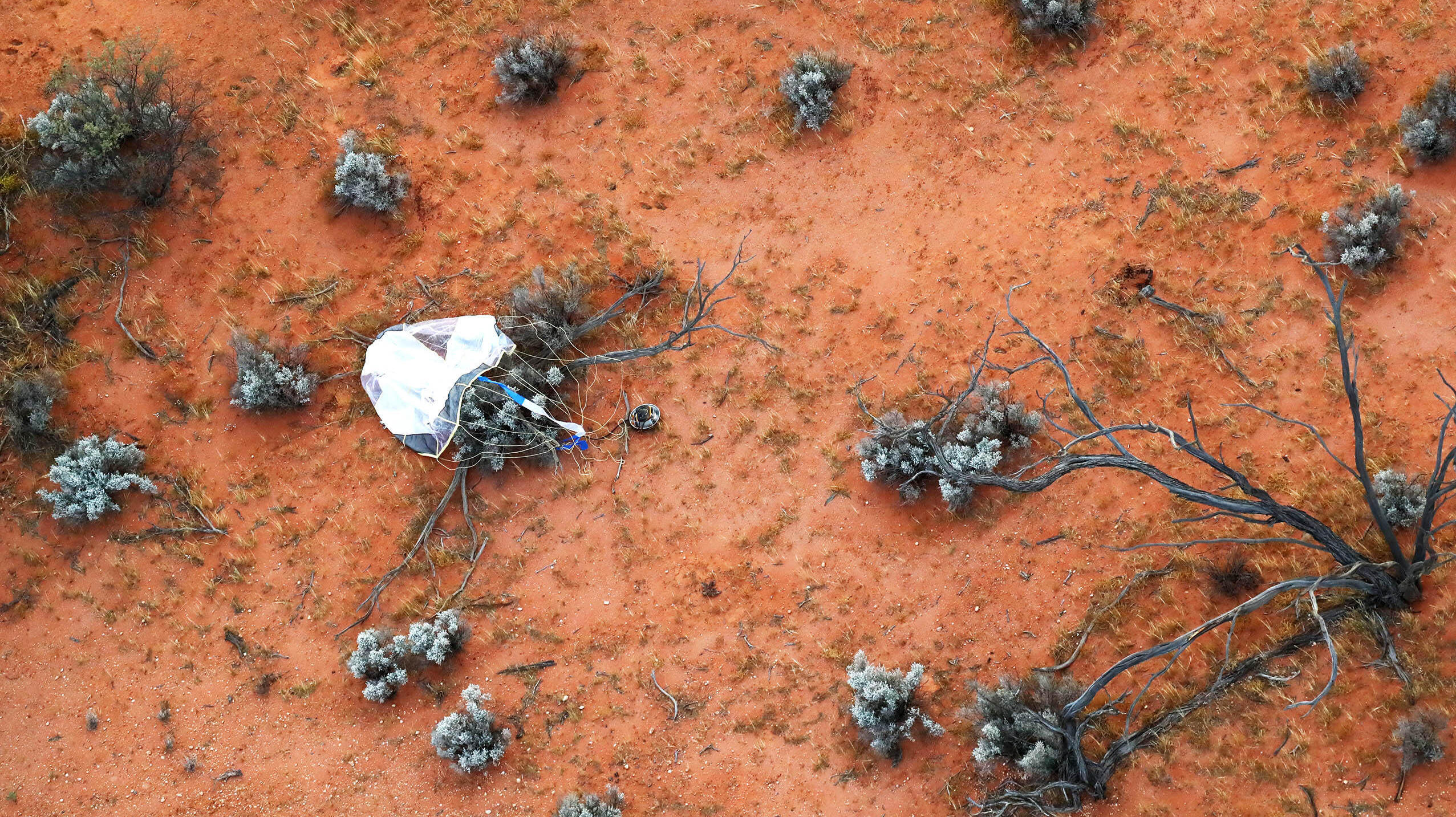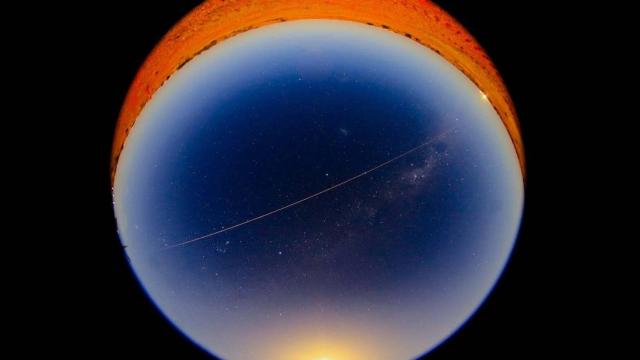After six years of travelling and exploring, the Japanese Aerospace Exploration Agency’s Hayabusa2 probe on Saturday sent a capsule back to Earth filled with what scientists hope is at least a 100 milligram-sample of the asteroid Ryugu, which is located about 300 million kilometres from Earth. Hayabusa2 has made history by bringing back the world’s first subsurface asteroid sample.
The capsule separated from the main Hayabusa2 spacecraft at 4:30 p.m. AEDT on Saturday, according to JAXA, and was spotted re-entering Earth’s atmosphere at around 4:30 a.m. AEDT on Sunday. Upon reentry, the capsule briefly turned into a fireball, leaving a trail in its wake that also guided the JAXA recovery team. Besides the trail, the capsule itself contained a radio beacon, which gave off a signal that was detected by the mission’s managers, to help the team track its location, per the New York Times.

Before landing, the capsule deployed a parachute, which aimed to slow down the vehicle and allow it to land softly in the Woomera Prohibited Area in southern Australia. Landing was just one part of the task at hand though, the other part was finding the small capsule, which measured about 40 centimetres in diameter.
If you’re thinking, “well, hey, that’s not too small,” wait for it: It landed in an area that spans about 100 square kilometres. At night. But the good news is that it landed in the expected landing area, which was quipped with five antennas to help scientists find the capsule’s beacon signal, the Verge reported. The space agency also had a helicopter on hand with a beacon receiver to search and a drone that was taking pictures.
Don’t worry. They found it.

Yuichi Tsuda, a Hayabusa2 project manager at JAXA, said the agency found the capsule as planned and that it was in perfect shape, according to the Associated Press.
“We were able to land the treasure box,” Tsuda said. “I really look forward to opening it and looking inside.”
Indeed, to scientists, the asteroid sample from Ryugu really is like a treasure box. As explained by the Verge, asteroids are the earliest pictures of our Solar System. They’ve been around for billions of years, and scientists don’t think they’ve changed much. Some scientists believe that it’s possible that asteroids like Ryugu brought water to Earth when they struck it, thereby making the planet habitable. Asteroid samples could help shed light on this hypothesis.
After arriving at Ryugu in June 2018, Hayabusa2 aworked very hard and in very creative ways to get its samples. First off, it fired a projectile onto Ryugu’s surface to move around the surface material and then successfully scooped up the debris in its sample collection instrument, which is shaped like a horn. For its second collection effort, it aimed to gather subsurface material from Ryugu by firing a copper bullet onto the surface, producing an artificial crater surrounded by underground asteroid material. Scientists were especially excited by this attempt since subsurface material is shielded from the effects of space weathering, such as the effects of cosmic rays or charged particles from the Sun.
JAXA scientists aren’t quite sure how large the sample collected by Hayabusa2 is, but they are hoping it’s at least 100-milligrams, which they say would be enough to carry out their planned research. The first Hayabusa mission in 2010 wasn’t able to get a substantial sample from the asteroid Itokawa due to a failure in the spacecraft’s sampling device. As a result, scientists were only able to retrieve micrograms of dust from Itokawa.
When it comes to Hayabusa2, scientists won’t know until they open the capsule. The capsule will be opened in Japan and an announcement on the amount of material collected will be made afterward, JAXA officials said, according to CNN.
Hayabusa2 is not retired yet, however. After dropping off the capsule, it whizzed away to go explore another asteroid, 1998KY26 to tackle more research questions, including how to find ways to prevent meteorites from hitting Earth.
